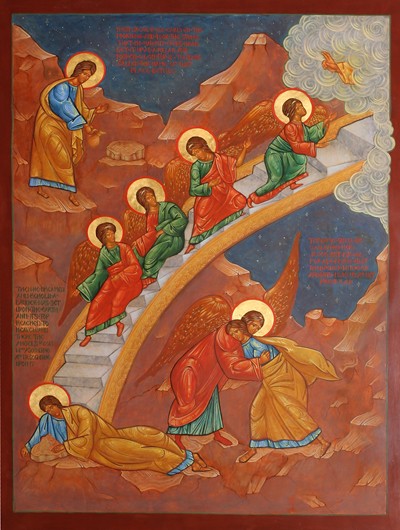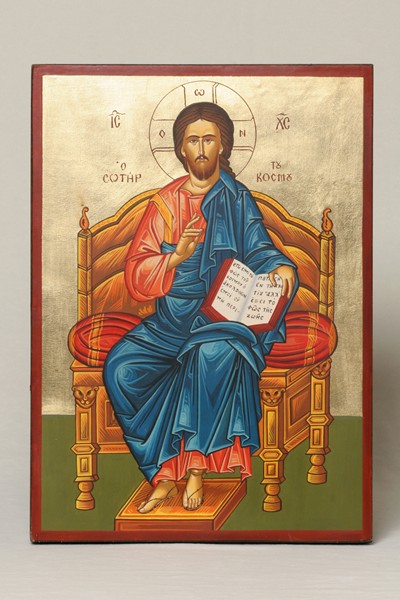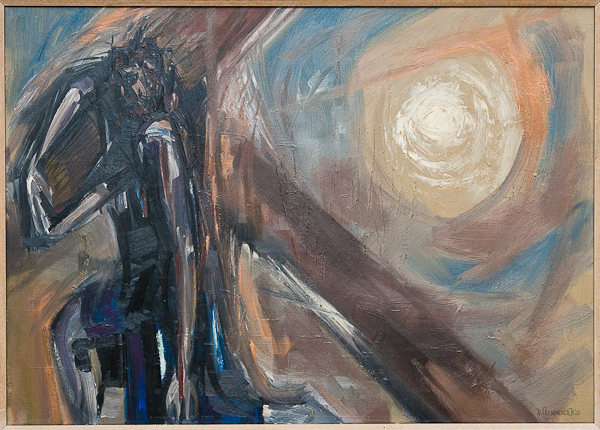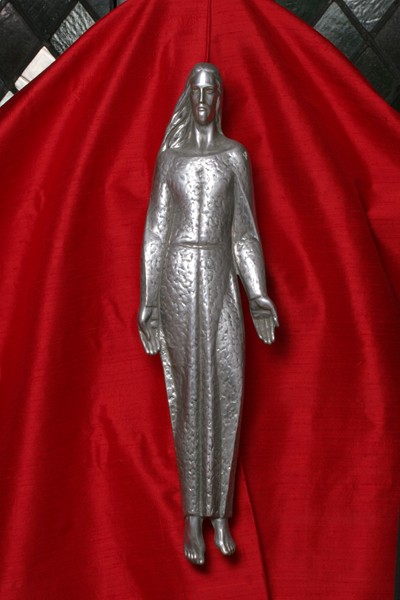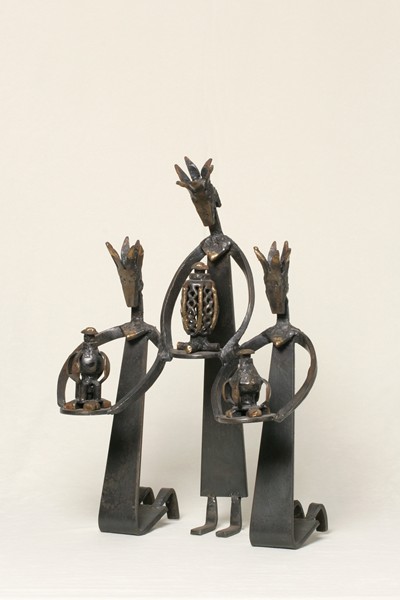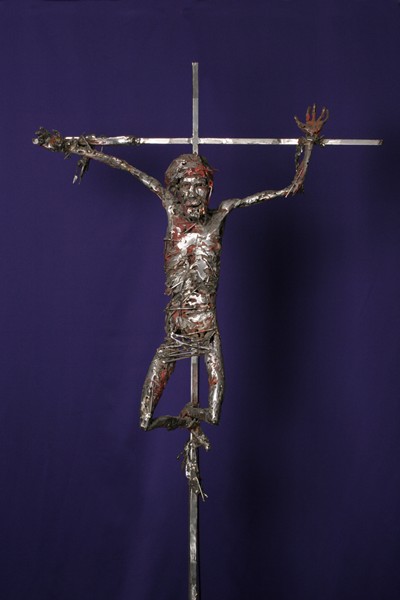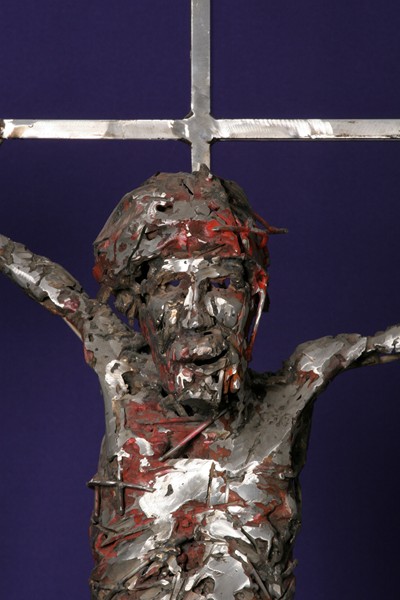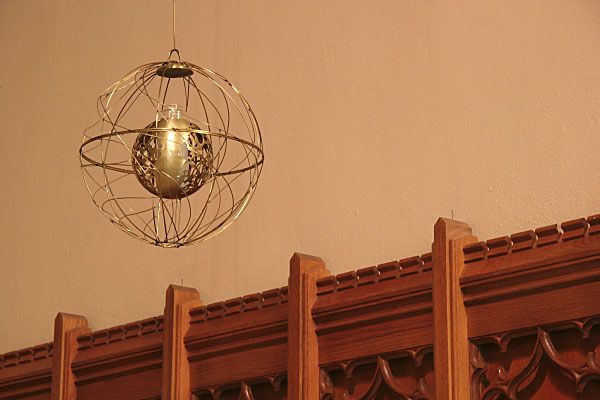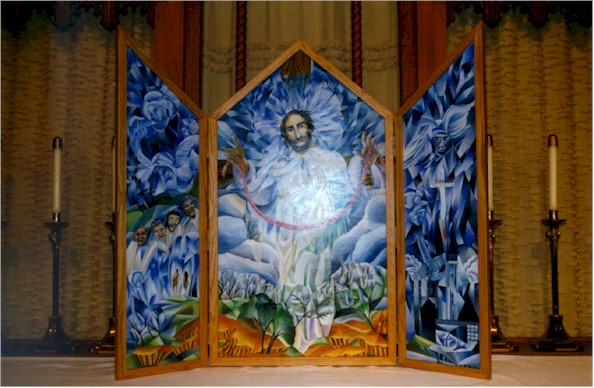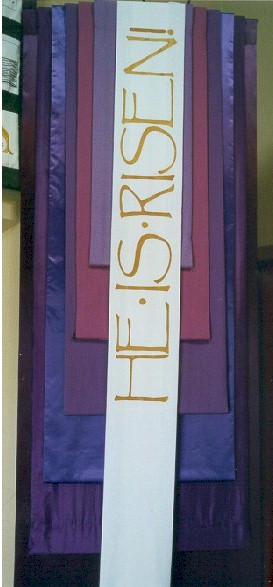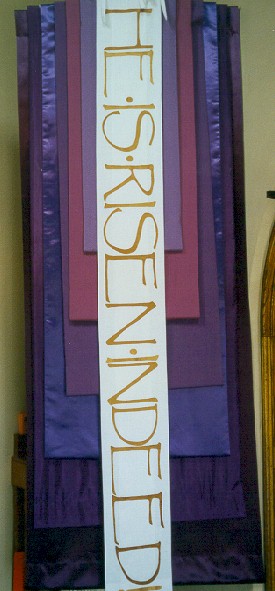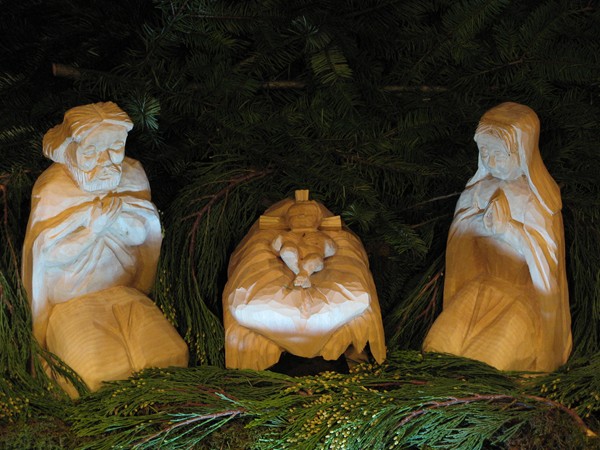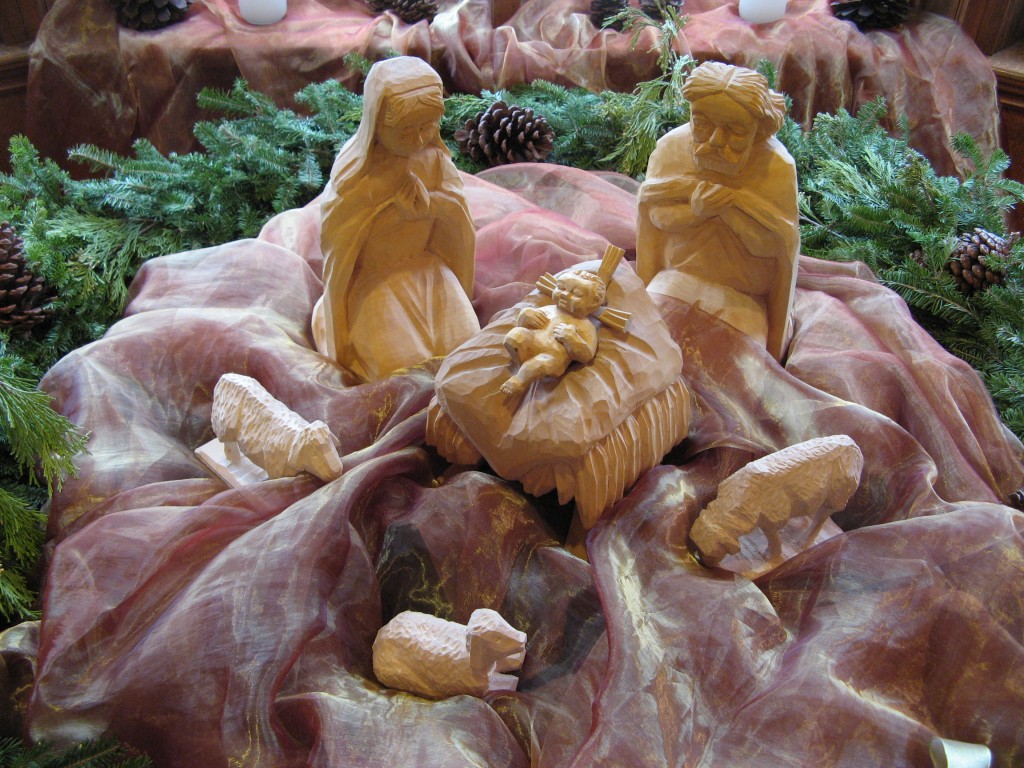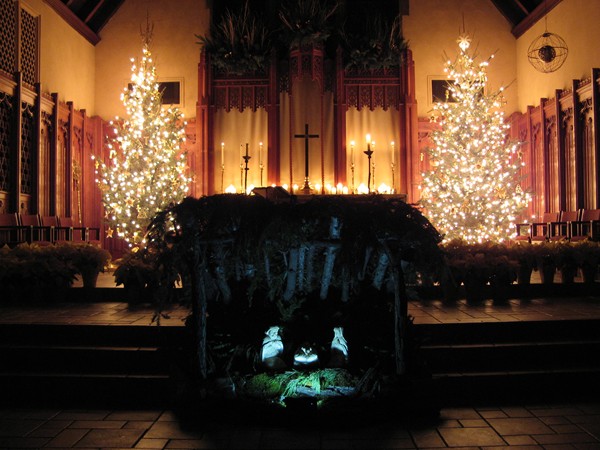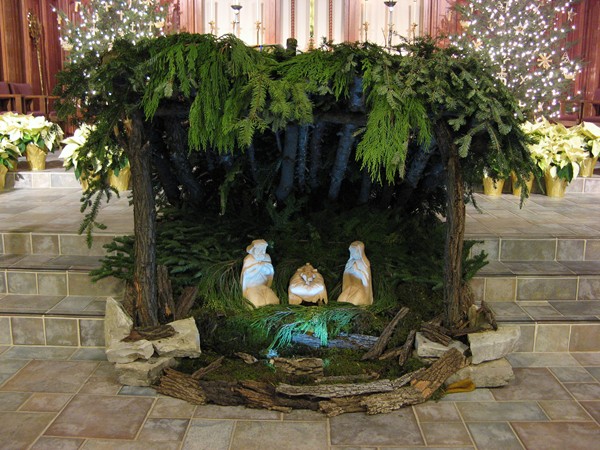Bethel has several pieces of sacred artwork. We have taken good pictures of these:
Icon Commissioned for Bethel’s 90th Anniversary
The Icon of Jacobs Ladder was written by the hand of Father Theodore Bergenske of St. Isaac of Syria Skete in commemoration of the ninetieth anniversary of Bethel Church in 2003. The icon is 3 feet by 5 feet and hangs in the vestibule of the church.
In the center of the icon we see “…a ladder set up on the earth, and the top of it reaching to heaven: and behold the angels of God ascending and descending on it”. (Gen 28:12.) The angels are robed in green and red. Green is a traditional color to represent the angelic. ( St. John the Baptist is often shown robed in a green garment because he was considered an angel on earth.) Red symbolizes divinity. The red robe of the angels represents the fiery zeal of the celestial hosts and the reflection of the divine which they carry.
At the top of the icon, a hand reaching from the “cloud of unknowing” reveals God’s presence and blessing.
At the base of the ladder, Jacob is resting his head upon the stones where he would receive the vision of the ladder. He is robed in the golden color used for desert saints, reflecting his spiritual and ascetic struggle in the desert near Haran.
In the upper left hand corner, Jacob is anointing the stone upon which he slept. After anointing the stone “…he called the name of that place Beth–el…” and vowed to God that he would build a temple upon the stones and donate to the temple one tenth of everything God would grant him.
In the lower right of the icon Jacob is shown wrestling with the angel of God of whom Jacob said, “I have seen God face to face, and my life is preserved”. Jacob was blessed by the Angel and renamed Israel after a resolute, night-long struggle. The angel wears a bluish interior garment, because blue represents the human, and God, by appearing as an angel, descended to connect more personally with Jacob, to bless him and his future generations. This scene also foreshadows Christ’s coming.
The Icon Of Christ Enthroned
A member of Bethel Church brought this icon from Greece. It was written at Mount Athos. The icon hangs on the wall in the vestry of Bethel Church.
This particular image of Christ is most often referred to as Christ Pantokrator. The term “Pantokrator” translates to “Ruler of All” or “All Powerful” or “Lord of Hosts” and is a common icon, found almost universally in Orthodox Churches. Often, the Pantokrator occupies the entire dome of a church over the altar. The Pantokrator is often shown full-length, but also, frequently, half-length.
The sole figure here is of Our Lord Jesus Christ seated on a throne with his feet resting on a footstool. The throne and the footstool are both borrowed from Eastern culture. Kings and Rulers would have thrones on which to sit. Their feet would not rest on the ground as this would be considered beneath them. In this image Christ wears a red undergarment. In iconographic tradition red is the color that signifies divinity. Over his red undergarment is a blue mantel. Blue is the color that signifies humanity. Thus with the use of color we are shown that Christ the Son of God descended to earth both human and divine, God and man. Around his head you see a circle of light, an aura or nimbus. In ancient times before Christianity, this circle of light was used in images that depicted Royalty. The nimbus would be used on the image of a ruler or emperor to show their importance. The three letters in the nimbus are an acronym for “I AM”, a reference to Christ’s divinity. At his shoulders you see a phrase written in Greek, which says “The Savior of the world”. The open Gospel Book reads: “I am the light of the world. Those who follow me will not walk in the darkness but will have the light of life.”
There are a few unusual features in this form of Christian mystical art that you will notice. First is the flatness of the figure and its presentation as being extremely close to you. This feature brings the subject in direct relationship with the viewer and gives the fullest expression to the faces. Second you will observe that the physical features of the figure are odd. The eyes are shaped like large almonds, the ears, nose, hands and feet are elongated and the mouth is rather small. The positioning of the arms and legs are unnatural. If a human positioned himself or herself this way it would be extremely uncomfortable. You will also notice a deliberate disregard for natural perspective in order to avoid three-dimensionality. All these features are used to indicate that the subject has a divine nature. They are used so that the figure does not look truly human. Since icon painting is not realistic, it shows no natural source of light and does not represent shadows. The only light in icons is the inner light of the figures and the divine light of Christ.
Christ Bearing The Cross, by Richard Caemmerer
Donated to Bethel Church approximately 2006 by Bill Buege and his sister Karen, in memory of their mother Gladys Buege. The Buege family were friends of the artist; Bill and Karen bought this painting from the artist and gave it to their parents William and Gladys probably around 1970.
Welcoming Christ:
Three Kings, donated by Harry Fisher:
The Eternal Flame holder, hanging above the chancel:
The Easter Banners:
The Creche Set, carved by member Roy Ledbetter:
As displayed for Christmas 2014:

